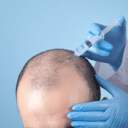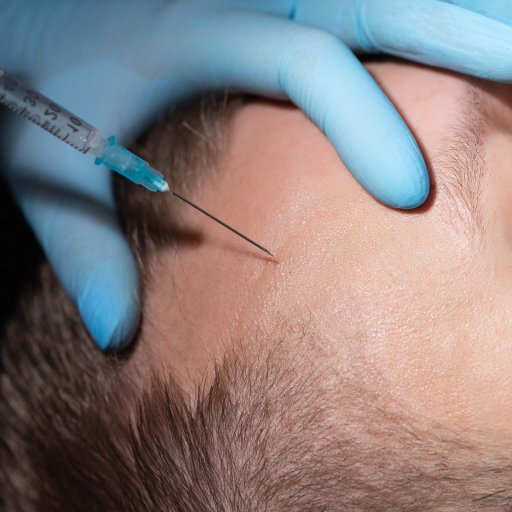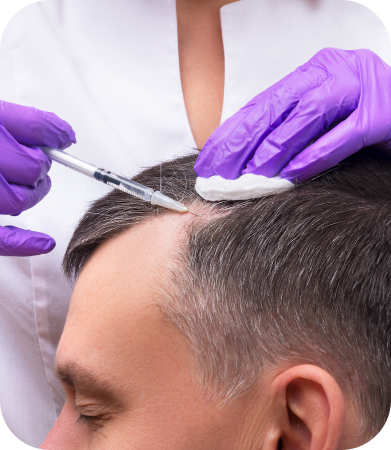Is PRP Treatment Effective At Regrowing Hair?
In theory, our body operates more effectively when there’s better blood flow. Thus, PRP helps energize vital organs and allows them to perform more effectively. Studies have shown that activated platelets can release numerous growth factors as part of the healing process that may promote hair growth.
These growth factors include:
- Platelet-Derived Growth Factor (PDGF)
- Transforming Growth Factor (TGF)
- Vascular Endothelial Growth Factor (VEGF)
- Insulin-like Growth Factor (IGF)
- Epidermal Growth Factor (EGF)
- Interleukin (IL)-1
Growth factors can promote new follicle development and blood vessels, called neovascularization. PRP therapy in balding areas of the scalp can heal the shrinking strands and produce hair more efficiently.
In a 2014 pilot study of PRP, researchers injected 2 to 3 mL of PRP four times, scheduled at two weeks apart. The 11 participants had not seen results from topical Minoxidil and oral Finasteride.
The researchers found that hair loss slowed down between PRP’s first and fourth injections. They concluded, “A PRP injection is a simple, cost-effective, and feasible treatment option for male pattern baldness. Hence, with high overall patient satisfaction.”
This study offers some hope, but it still needs more research and further clinical studies with larger participant groups before it can be proven effective as a stand-alone treatment.
Although the efficacy is still debatable, PRP therapy has been proven very effective in wound healing, which is why we almost always use it alongside FUE. After harvesting the hair follicles from the donor site, the PRP is injected back into the scalp to promote faster healing.
After FUE treatment, proper care plays a major role in the success of the hair restoration procedure, so you need to follow your doctor’s post-op hair transplant instructions by your doctor.
These instructions include:
- Spraying the scalp with water and letting it air dry.
- Avoiding washing or brushing your hair for the first week.
- Refraining from dyeing your hair for the first month.
Following these instructions ensures the transplant site accepts the relocated follicles and allows the donor site to heal properly. PRP treatment also promotes a faster healing time and better results for FUEs.


